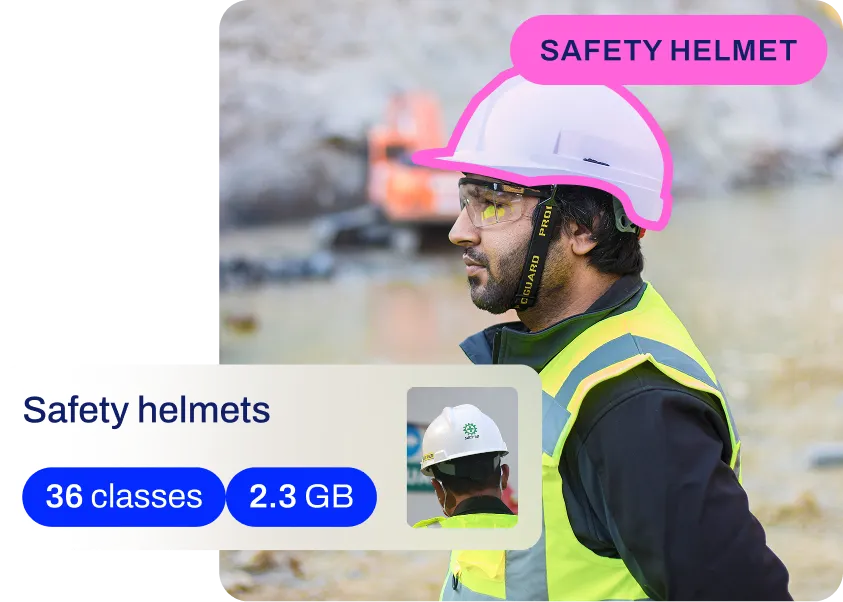Vanishing Gradient
Discover the vanishing gradient problem in deep learning, its impact on neural networks, and effective solutions like ReLU, ResNets, and more.
The vanishing gradient problem is a significant challenge encountered during the
training of deep
neural networks. It occurs when gradients, which
are the signals used to update the network's
weights via
backpropagation, become extremely small as they are
propagated from the output layer back to the initial layers. When these gradients approach zero, the weights of the
initial layers do not update effectively. This stalls the learning process for those layers, preventing the
deep learning model from converging to an optimal
solution.
What Causes Vanishing Gradients?
The primary cause of vanishing gradients lies in the nature of certain
activation functions and the depth of the
network itself.
-
Activation Functions: Traditional activation functions like the
sigmoid and
hyperbolic tangent (tanh) functions
squeeze their input into a very small output range. The derivatives of these functions are always small. During
backpropagation, these small derivatives are multiplied together across many layers. The more layers the network
has, the more these small numbers are multiplied, causing the gradient to shrink exponentially.
-
Deep Architectures: The problem is particularly pronounced in very deep networks, including early
Recurrent Neural Networks (RNNs),
where gradients are propagated back through many time steps. Each step involves a multiplication by the network's
weights, which can diminish the gradient signal over long sequences.
Vanishing Gradients vs. Exploding Gradients
Vanishing gradients are the direct opposite of
exploding gradients. Both problems relate to the
flow of gradients during training, but they have different effects:
-
Vanishing Gradients: Gradients shrink exponentially until they become too small to facilitate any
meaningful learning in the early layers of the network.
-
Exploding Gradients: Gradients grow uncontrollably large, leading to massive weight updates that
cause the model to become unstable and fail to converge.
Addressing both issues is crucial for successfully training deep and powerful
AI models.
Solutions and Mitigation Strategies
Several techniques have been developed to combat the vanishing gradient problem:
-
Better Activation Functions: Replacing sigmoid and tanh with functions like the
Rectified Linear Unit (ReLU) or its
variants (Leaky ReLU,
GELU) is a common solution. The
derivative of ReLU is 1 for positive inputs, which prevents the gradient from shrinking.
-
Advanced Architectures: Modern architectures are designed specifically to mitigate this issue.
Residual Networks (ResNets) introduce
"skip connections" that allow the gradient to bypass layers, providing a shorter path during
backpropagation. For sequential data,
Long Short-Term Memory (LSTM) and
Gated Recurrent Unit (GRU) networks use
gating mechanisms to control the flow of information and gradients, as detailed in the original
LSTM paper.
-
Weight Initialization: Proper initialization of network weights, using methods like He or
Xavier initialization, can help ensure
gradients start within a reasonable range.
-
Batch Normalization: Applying
batch normalization normalizes the inputs to
each layer, which stabilizes the network and reduces the dependence on initialization, thereby mitigating the
vanishing gradient problem.
Modern deep learning frameworks and models like Ultralytics YOLO11 are built with these solutions integrated into
their architecture. You can easily create a model that leverages these principles without manual configuration.
from ultralytics import YOLO
# Load a model built from a YAML configuration file
# The architecture defined in 'yolo11n.yaml' uses modern components
# like ReLU-based activations and normalization layers to prevent vanishing gradients.
model = YOLO("yolo11n.yaml")
# Train the model with confidence that the architecture is robust against this issue.
# The training process benefits from stable gradient flow.
results = model.train(data="coco128.yaml", epochs=3)
Real-World Impact and Examples
Overcoming vanishing gradients was a critical breakthrough for modern AI.
-
Computer Vision: It was once thought that simply making
Convolutional Neural Networks (CNNs)
deeper wouldn't improve performance due to training difficulties like vanishing gradients. The introduction of
ResNet architectures proved this wrong, enabling networks with
hundreds of layers. This led to major advances in
image classification,
image segmentation, and
object detection, forming the foundation for
models like Ultralytics YOLO. Training these models often involves
large computer vision datasets and requires robust
architectures to ensure effective learning.
-
Natural Language Processing (NLP): Early RNNs failed at tasks like
machine translation and long-form
sentiment analysis because they couldn't
remember information from the beginning of a long sentence. The invention of LSTMs allowed models to capture these
long-range dependencies. More recently,
Transformer architectures use
self-attention to bypass the sequential gradient
problem entirely, leading to state-of-the-art performance in nearly all
NLP tasks, a topic often explored
by research groups like the Stanford NLP Group.












